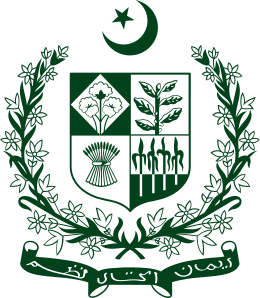Marri-Bugti Country
| Marri-Bugti Country | |||||
| Subdivision of Pakistan | |||||
| |||||
| Capital | Sibi | ||||
| History | |||||
| • | Established | 1877 | |||
| • | Disestablished | 14 October 1955 | |||
| Area | 7,129 km2 (2,753 sq mi) | ||||
| Government of Balochistan | |||||
 |
| This article is part of the series |
| Former administrative units of Pakistan |
|---|
|
Original provinces |
|
One-unit provinces |
|
Other subdivisions |
Marri-Bugti Country (Marri and Bugti Country) was a tribal region during the British occupation of Baluchistan. Marris and Bugtis are the strongest Baloch tribes in the Balochistan. The Marris occupied 8,460 square kilometres (3,268 sq mi) in the north, while the Bugtis occupied 10,000 square kilometres (3,861 sq mi) in the south. Today, the region is divided into three districts: Kohlu, Dera Bugti and Sibi.
History
The Marris and Bugtis first met the British when a Major Billamore entered their territory during the First Anglo-Afghan War. In April 1840, Captain Lewis Brown was sent to occupy Kahan but surrendered to Marri Chief Doda Khan five months later. Meanwhile, Bugtis had trouble with Sir Charles Napier and General John Jacob came greater trouble with both tribs. In 1845 after the treaty was signed which shows that both tribs were supported financially by Khan of Kalat.
Population
By 1901, the total population of the Country was around 39,000, of which 19,000 or so were Marri, 18,500 Bugti, and 415 Hindu. Most inhabitants were nomadic.
The Marris were divided into three sub-clans: the Bahawalanzai from the Ghazini clan and the Sherzai and Bijarani from the Loharani clan. The Bugti clans were Pairozani Nothani, Durragh Nothani, Kalpar, Mondrani, Shambhani and Rahija.
See also
Further reading
- Report of the Indian Statutory Commission ... By Great Britain Indian Statutory Commission, John Allsebrook Simon Simon
- Balochistan Through the Ages: Selection from Government Record. By Baluchistan (Pakistan)
- Matheson, Sylvia A. The Tigers of Baluchistan. London: Arthure Barker Limited (1967). Reprint: Oxford University Press, Karachi (1998), ISBN 0-19-577763-8.